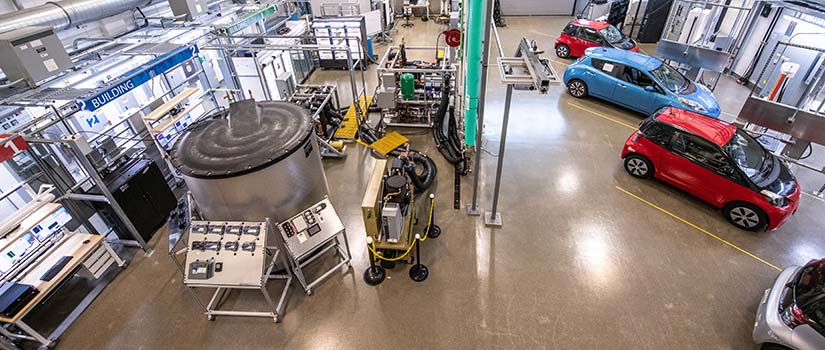Grid-Buildings Integrated Energy Systems
NREL sees buildings as an integral part of the future energy system and has developed modeling and simulation, laboratory testing, and data analysis capabilities to be at the forefront of grid-buildings integrated energy systems.

The interface between buildings and the grid is critical for achieving electrification and demand-side sustainability. NREL researchers are advancing building controls and automation, efficiency of end use, and deployment of onsite generation and storage to reshape the future energy system.
Buildings account for more than 70% of all U.S. electricity use and 40% of all primary energy use. The efficiency of building energy consumption, and the electrification of heat and transport, will determine the level of investment needed in critical grid infrastructures across the U.S. Managing electricity demand through energy efficiency and control will help alleviate the massive grid upgrades required to facilitate the large-scale electrification of heat and transport.
Buildings have the potential to greatly assist in the integration of renewable energy resources by using demand-side flexibility to balance the variability of wind and solar generation. More frequently, buildings are becoming a source of generation, with distributed energy resources such as rooftop solar and battery energy storage reducing the requirement for bulk system generation and improving onsite sustainability and reliability.
Capabilities
NREL takes a holistic approach to the grid-buildings energy system interface and has developed modeling and simulation, laboratory testing, and data analysis capabilities to help shape the grid-buildings energy system.
- Buildings and grid interface models and simulation enable us to examine advanced building control and automation, participation in future
market structures such as transactive energy markets, building provision of grid services,
the cybersecurity of cloud-connected appliances, and the massive deployment of distributed
energy resources.
- Buildings test beds, hardware-in-the-loop, and integrated testing at the Energy Systems Integration Facility and the Thermal Testing Facility enable
us to perform thermal and electrical characterization of home appliances and distributed
energy resources. Our test capabilities include rooftop solar emulators and inverters,
electric vehicle charging stations, HVAC equipment, and electrical and thermal energy
storage. Our mock homes enable hardware characterization, home energy management control
algorithm testing, and hardware-in-the-loop building-grid co-simulation.
- High-performance computing for large-scale data analysis and co-simulation enables us to perform detailed simulations with millions of building devices connected to the grid and analyze the massive volumes of data generated by real-world devices.
Publications
OCHRE: The Object-Oriented, Controllable, High-Resolution Residential Energy Model for Dynamic Integration Studies, Applied Energy (2021)
High-Frequency, Multiclass Nonintrusive Load Monitoring for Grid-Interactive Residential Buildings, IEEE Power and Energy Society Innovative Smart Grid Technologies Conference (2020)
Metrics and Analytical Frameworks for Valuing Energy Efficiency and Distributed Energy Resources in the Built Environment, ACEEE Summer Study on Energy Efficiency in Buildings (2020)
A Model-Predictive Hierarchical-Control Framework for Aggregating Residential DERs To Provide Grid Regulation Services, IEEE Power and Energy Society Innovative Smart Grid Technologies Conference (2020)
Quantification of Load Flexibility in Residential Buildings Using Home Energy Management Systems, American Control Conference (2020)
Simulating Dispatchable Grid Services Provided by Flexible Building Loads: State of the Art and Needed Building Energy Modeling Improvements, Building Simulation (2020)
Time-of-Use and Demand Charge Battery Controller Using Stochastic Model Predictive Control, IEEE International Conference on Communications, Control, and Computing Technologies for Smart Grids (2020)
Contact
Share
